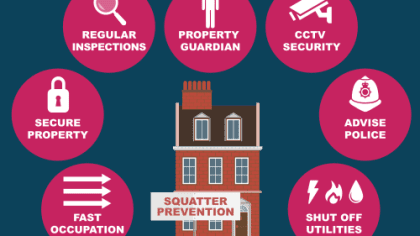Sometimes I say to myself: is moving to NYC worth it considering how expensive it is to live a basic and comfortable lifestyle in the city. Some people would say that the cost of living in NYC is as high as the buildings in the city, yea, funny but true. But then, this high cost of living is not just peculiar to New York City, other large and busy cities like Los Angeles, Boston, Washington DC, and San Francisco are also largely expensive cities to live in. So, living in these big cities with big opportunities, good-paying jobs, and access to modern facilities come at a price.
I’ve heard people ask “How much money should I save to move to new york,” “How much of your income should go to rent?” But as far as these questions help you plan well and live within your means, the answer is that there are no ‘one-size-fits-all’ standards for these things. However, these questions shouldn’t really be the question when trying to move to New York City. As against asking those questions, relevant questions would be centered around the quality of space you want to get and how you can get more at less in New York City.
There are several ways and methods that people have come up with on apportioning their rents and answering the question of what should be spent on rent. One of all these methods is the popular 30% rule. For most people, the 30% rule seems perfect in determining how much of your income should go to rent.
The dictates of the 30% rule suggest that you budget 30 percent of your monthly income to house rents. So with this rule, the quality of the living space that you can rent will be dependent on the income that you make. But there is a downside to this method, a major downside in fact. Now, imagine a family of four whose income, according to the 30% rule can only afford them a one-room apartment in New York City, what exactly should be their fate? Or a young man whose 30 percent of income can cover for the rent of the living space that he desires and even allow for investment?
How far can the 30 percent rule go in helping him make informed decisions about how much to pay for rent? The 30% rule was a really popular finance apportionment rule some decades ago, but presently, it has recently lost relevance since most people believe that it has lost the capacity to help people make sufficient financial decisions. Asides the fact that it is rigid and doesn’t factor in the fact that income is not necessarily progressive along the lines of family size and responsibility, spending 30% of your income on rent will mean that a lot of your other needs will suffer especially in a place like New York City where prices are all up.
Another supposed good enough budgeting standard is the 50/30/20 rule. This one you can say is a better metric for finding an appropriate answer to the question of how much should you spend on rent and determining what your cost of rent in NYC should be. So, according to the rule, you are advised to allot 50 % of your salary on your monthly fixed expenses like rent, water, gas, electricity, transportation, and groceries. 30 percent of your income then goes to non-essentials like entertainment, vacation, and giftings. And your last 20 % should then go to savings or settling debts.
Now, this rule is a lot more flexible than the 30 percent rule, although it still shares a similar problem with the salary apportionment plan. The plan gives room for people to adjust their salary apportionment to suit their expense pattern. For instance, if you are the kind of person that doesn’t spend so much on non-essentials, then you can afford to save more or spend more on groceries or rent, thereby increasing the fraction of your income that goes to other things. But in a case where a person runs a business and there is no consistency in the expected revenue per month, how can you possibly ascertain what your rent will be.
So from all of these, my conclusion is that your choice of a living space shouldn’t be dependent on a stipulated answer to what percentage should go to rent. It should rather first be a conversation around the kind of apartment you will love to rent, the facilities you look to having in the house, and yes, the location within which you need the space. So basically, in planning your rents, pay attention to the location. Not all areas in New York City are so expensive to live in. Work with the average rent costs for the different areas within the city. The average cost of renting a one-room apartment in major areas in New York City includes:
Manhattan – $3,800
Queens – $2,800
Bronx – $2,200
Brooklyn – $3,200
Staten Island – $2,400
So I hope that all of the above answers the question of what percentage of one’s salary should be spent on getting an apartment. You can decide to stick to one of these percentage formulae or just work out something that works well for you. But while at it, you should bear in mind the fact that eventually the target and aim of trying to plan your salary is for you to have a balanced financial situation while living your dream lifestyle.
It really is not always just about salary or how much of your income should go to rent. Eventually, you will find that regardless of how much it will cost to move to New York City, or what your income is, you can still eat your cake and have it; navigate your way and cut costs with a little more planning. Below are some tricks that can help you cut your house costs.
How To Cut The Cost Of Rent In NYC
Increase the transport costs to reduce rent
You can decide to either stay in the city’s center or in the peripheral areas of the city. I understand that it is only normal to stay close to where you work, but in this case, if you work in the city center, which is most likely the case, you can cut costs on rent by compromising on distance. The further away you are from the city center, the less costly it is to get an apartment. And aside from the cost of rent in NYC, houses in areas outside the city center are always more spacious than those within the city’s center.
Reduce transport cost and reduce the cost of rent
The second option is to stay within the city center on a co-living housing arrangement. This way, you save money on transport costs, and still enjoy the euphoria of being in the city center. This arrangement allows for more than one person to occupy an apartment, so this way, all occupants pool resources together and cover the cost of the house, and then utilities. Rents become affordable, and transport cost is cut down too.
SharedEasy Coliving Company
Yes, coliving with people is an awesome option. Here, sharing is not just restricted to the cost of rent or utility, you get to share costs of moving, furniture, kitchen supplies, the set up of all utilities, chores, and the general maintenance of the house. It is a good way to reduce the percentage of income that should go to leasing homes. Another added advantage to the option of the coliving arrangement is having a company and support system in housemates. They will serve as a family away from family. There is nothing as terrible as being a newcomer without a single friend in a city like New York where everyone is busy with their lives and always on the move. With the co-living arrangement, boredom or loneliness is out of the equation, and reduce the possible rental costs.
With this too, I guess you now understand that the crux of the discussion should not be about how much to pay for rent, but how best to optimize the money you spend, in such a way that you pay less and still get good value for the amount spent.
Take note that while coliving seems like the cheapest way to move in NYC, your privacy and boundaries might suffer. So to prevent clashes in this area, it is important that before you move in, reach a consensus on the sharing pattern for financial responsibilities, privacy terms, and other general expectations. To ensure this, work with a coliving company. SharedEasy does a great job of offering co-living packages that guarantee security and high compatibility of housemates.
Reach SharedEasy coliving company to reduce the cost of moving, transportation, and rental.





